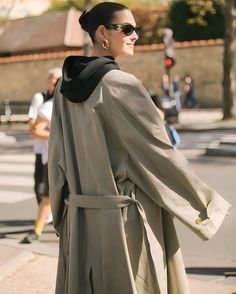The Evolution of Fashion Brands: A Journey Through Style, Sustainability, and Success
Fashion brands have always been more than just clothing labels; they’re storytellers, trendsetters, and cultural icons. Over the years, these brands have evolved, adapting to changing consumer preferences, technological advancements, and sustainability concerns. In this article, we’ll explore the dynamic landscape of fashion brands, from their humble beginnings to their modern-day impact on style, society, and the environment.
Origins of Fashion Brands: From Ateliers to Global Empires
Fashion brands often trace their roots back to small ateliers and workshops where skilled artisans crafted garments by hand. These early brands were built on craftsmanship, quality, and attention to detail. Iconic labels like Chanel, Gucci, and Louis Vuitton emerged during this era, laying the foundation for the modern fashion industry.

The Rise of Fast Fashion: Disrupting the Traditional Model
The advent of fast fashion revolutionized the industry, offering affordable, on-trend clothing to the masses. Brands like Zara, H&M, and Forever 21 pioneered this model, churning out new collections at breakneck speed. While fast fashion democratized style, it also raised concerns about labor practices, environmental impact, and disposable consumerism.
Beyond Clothing: Fashion Brands as Lifestyle Icons
Today’s extend beyond clothing, encompassing fragrance, accessories, and even home goods. Luxury houses like Dior and Versace have become synonymous with opulence and glamour, while athleisure brands like Nike and Adidas embody the intersection of fashion and functionality. These brands curate entire lifestyles, shaping consumer identities and aspirations.

Sustainability in Fashion: A New Imperative for Brands
With growing awareness of environmental and social issues, sustainability has become a top priority. From eco-friendly materials to ethical production practices, companies are rethinking every aspect of their supply chains. Innovators like Stella McCartney and Patagonia are leading the charge, proving that style and sustainability can coexist.
Fashion Branding in the Digital Age: Navigating Social Media and E-Commerce
The rise of social media and e-commerce has transformed the way connect with consumers. Platforms like Instagram and TikTok have become virtual runways, where trends are born and influencers reign supreme. Direct-to-consumer brands like Glossier and Wardy Parker have capitalized on this shift, bypassing traditional retail channels to forge direct relationships with customers.
Collaborations and Celebrity Endorsements: The Power of Partnerships
Collaborations and celebrity endorsements have long been a staple of the fashion industry, driving buzz and sales for brands. From high-profile designer collaborations to celebrity-owned labels, these partnerships create a sense of exclusivity and excitement. Icons like Rihanna and Kanye West have leveraged their star power to launch successful fashion lines, further blurring the lines between celebrity and designer.

The Future of Fashion Brands: Innovation, Inclusivity, and Influence
Looking ahead, the future of fashion brands lies in innovation, inclusivity, and influence. Technology will continue to shape the way we shop, with virtual reality and augmented reality offering immersive retail experiences. Diversity and inclusivity will become non-negotiables, as brands embrace models of all shapes, sizes, and backgrounds. And as the industry grapples with global challenges like climate change and social justice will be at the forefront of driving meaningful change.
Conclusion:
Fashion brands have come a long way since their humble beginnings, evolving into global powerhouses with far-reaching influence. From haute couture to streetwear, these brands reflect the ever-changing landscape of style, society, and sustainability. As we look to the future, one thing is clear: the journey of is far from over, and the best is yet to come.
